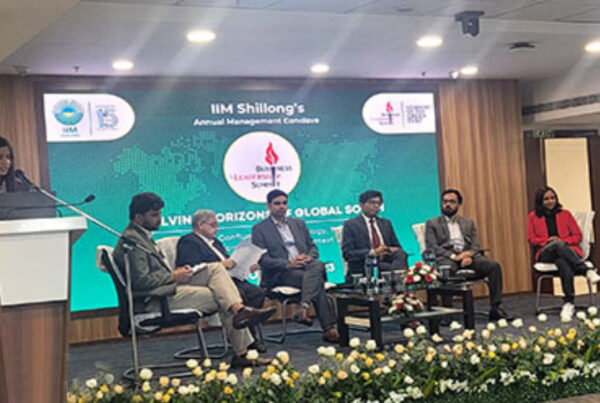With the transportation and automotive industries seeking to reduce their carbon footprint, the spotlight is on battery-powered vehicles and hydrogen-fuel cells. As carbon emissions increasingly come under the glare, and climate/environmental consciousness increases, the race to replace fossil fuels with renewable energy or green fuel is heating up.
However, this has thrown open a pertinent question. Which is the better option and why – battery-powered vehicles or hydrogen fuel cell cars?
Let’s d(r)ive in.
The differentiating mechanism
Electric cars use lithium-ion batteries that require an electricity grid for charging. This is just like any other electrical device, such as a computer or a telephone.
Hydrogen cars, on the other hand, run on hydrogen fuel cells.
Both mobility solutions have their sets of advantages and disadvantages. This is related to the technologies on which these vehicles run, as well as the availability of the supporting infrastructure and vehicles. The Welding Institute (TWI Global), a leading research and technology organization based in the UK with expertise in materials joining and engineering, provides an exhaustive list.
Electric cars
Electric cars enjoy the first-mover advantage compared to hydrogen cars. Since the technology as a concept preceded hydrogen fuel cell, naturally the charging infrastructure is more advanced. Governments across the world are investing in providing infrastructure support. This includes installing charging stations and providing incentives for building one.
Cost-wise, electric vehicles are cheaper than hydrogen-powered ones. Also, the cost of recharging is lower. This makes electric vehicles more feasible for long-term investment.
Also, electric cars don’t add to noise or air pollution. Plus, they consume zero energy when stationary, and are reliable.
Another factor why they are dependable is the lesser number of moving parts (as compared to internal combustion engines).
The biggest disadvantage, however, is that these cars offer a lower range compared to the time taken to recharge or refuel. Because of this reason, driving EV cars is more difficult.
Also, charging at high-power stations is expensive. In Germany, for instance, charging stations charge at the rate of per kilowatt-hour. High power charging stations cost around EUR10 more per kilowatt-hour (usually EUR0.30 per kilowatt-hour). Also, the cost of recharging varies from country to country—in France, it costs EUR2.25 for traveling 100 km, while, in the UK, it costs EUR3 for 100 km.
Hydrogen cars
Hydrogen cars, too, do not have tailpipe emissions. Plus, hydrogen is found abundantly in nature and a renewable source of energy. Therefore, it is also a contributor to environmental sustainability. Moreover, hydrogen cars are faster compared to EVs and offer a higher range.
The biggest challenge although with hydrogen cars is the absence of the required charging infrastructure of refueling stations. This has rendered hydrogen vehicles unviable. However, the hydrogen infrastructure is reportedly easy to scale up; with the right support and investment, this challenge could be addressed.
The other issue is cost. Cars running on hydrogen fuel are expensive, with recharging prices varying from country to country. However, given that the cost of hydrogen fuel cells has fallen by over 80% in recent years, this could change.
Comparison of key parameters
Range
For electric cars, the range depends significantly on the model of the vehicle. So, the more expensive cars offer a better range/mileage compared to the less expensive ones. Tesla’s Model S Long Range, for instance, gives a range of 375 miles, whereas Nissan Leaf Acenta’s, its less-expensive counterpart, has a range of 150 miles.
Comparatively, cars powered by hydrogen fuel cells have a higher range and shorter recharging time, implying faster refueling. For example, Hyundai Nexo has a range of 414 miles and takes just five minutes to refuel. Cost-wise, of course, hydrogen-powered vehicles don’t score high, as a budget-friendly option is yet to hit the market.
Infrastructure of charging/refueling stations
Electric cars fare better than hydrogen cars in terms of availability of charging infrastructure. According to 2022 data provided by Statista, China has the highest number of hydrogen-fueling stations the world over, 250 as of April 2022. It is followed by Japan, with 161.
The charging infrastructure for electric vehicles is comparatively much well established, with the number of refueling stations globally running into thousands.
Safety
Both sets of vehicles/cars have their own safety issues.
For hydrogen, it stems from its high flammability. Technological advancements have helped in addressing this concern to an extent. For instance, Toyota Mirai comes with a design specifically aimed at preventing the leakage of hydrogen.
Electric or lithium batteries, too, can cause injury upon being overcharged or overheated. Also, they ignite easily. Efforts are on to address these challenges by regulating temperatures and using multiple smaller batteries, instead of a few big ones, to avoid overcharging.
Emissions
Hydrogen and electric cars directly do not emit CO2 from their exhausts, but their manufacturing process is not emission-free.
The manufacturing of lithium-ion batteries is energy-intensive. Due to this, and the emissions produced during charging, the CO2 produced per km for a 100kWh battery stands at 124g (TWI Global estimates). Manufacturing hydrogen fuel cells also produces emissions, but using renewable energy to produce hydrogen can solve this problem to a great extent.
Cost issue
The cost of buying and maintaining electric vehicles is high. This, despite government support to promote these vehicles through grants or other incentives to keep prices down. The various costs include monthly battery rental, cost of charging, etc. While some budget options are available, the various costs stack up to offset the low-price aspect.
As for hydrogen vehicles, they are not just more expensive than electric vehicles, there are no budget-friendly options yet. Plus, there is the cost of refueling and upkeep, adding to the overall costs.
To conclude
From the purely technical perspective, lithium-ion battery vehicles seem to enjoy a greater share of the spotlight over hydrogen fuel cells. Much of this is largely due to green hydrogen not being developed as a technology yet. But with focus on innovation, investment in infrastructure and support to promote the technology, it could soon catch up with electric batteries.
Which of the two will dominate is not easy to answer. Perhaps it is wrong to look for a winner. Large-scale research and development activities are being undertaken in both domains on range, charging time, infrastructure, cost reduction, etc. This could lead to disruptive developments in either field.
For now, it rather seems safe to assume that both technologies can co-exist and be gainfully utilized in the transition towards building a green and clean environment. It is the bigger picture that needs to be kept in mind – always. Which technology works more for which segment or economy is more of an independent subjective call that will depend on several external and internal factors.
For more on Research, Analytics & Advisory, connect with Shubham Chatterjee, Vice President at Avalon Global Research.




